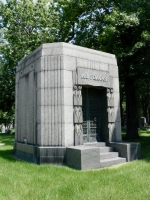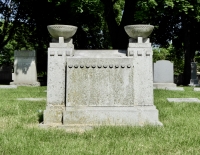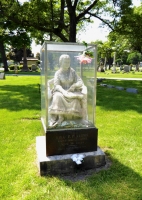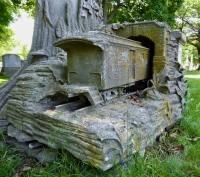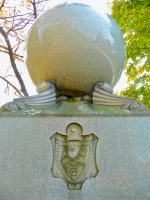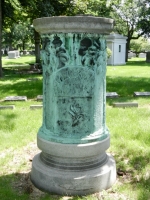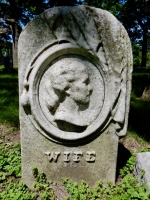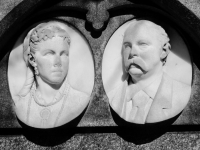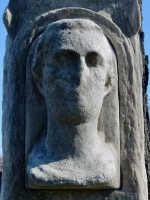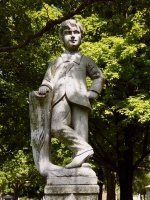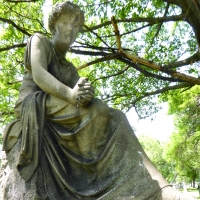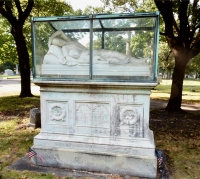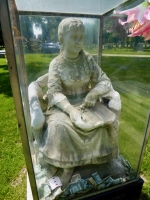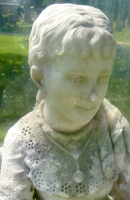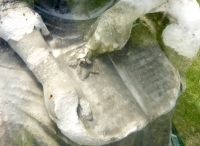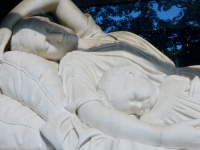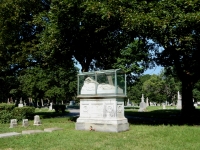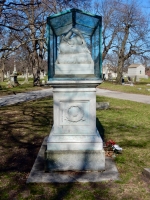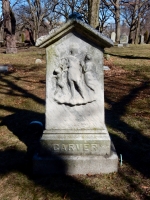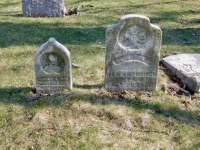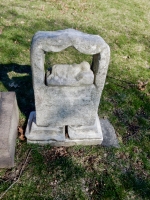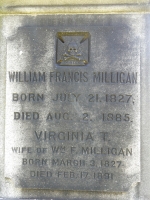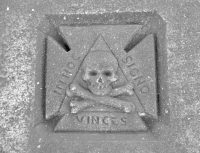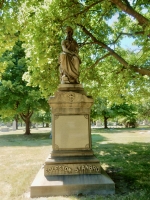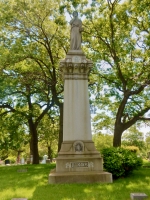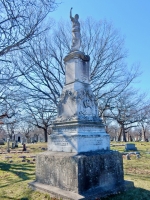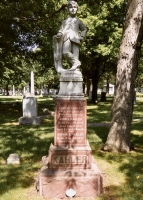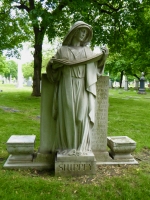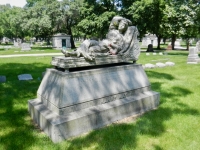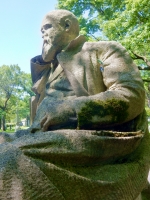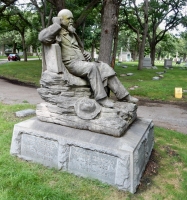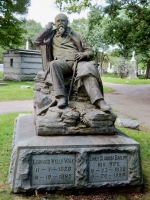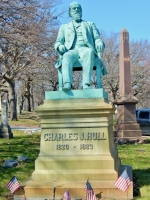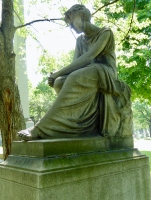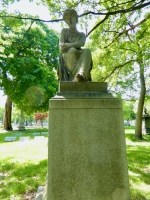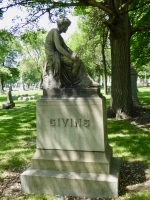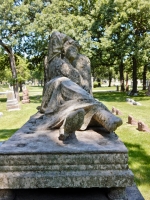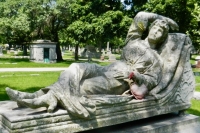Rosehill is the largest cemetery in Chicago, and one of the most beautiful. In part it’s the setting, with its ponds and mature trees. But it’s also a function of the many wealthy people buried there. One thing rich people are good for is leaving behind beautiful mausoleums and monuments. At first glance they can seem to represent an excess of egotism, but over time they become objects of beauty that justify the original hubris.
Rosehill Highlights
(Hundreds more below)
Founded in 1859, the site was supposed to be call Roe’s Hill after the farmer who sold the city the land. A clerk made it Rosehill, however. Given the timing, there are numerous Civiil War graves and memorials, yet it is also still a working cemetery. Some of the recent burials sport markers that can seem over the top, but like their century-old neighbors they are fascinating objects in their own right.
This all makes Rosehill a really fine place for a stroll — too fine during the 2020 pandemic. Management closed the grounds because they were being overrun with walkers who were treating the graveyard like the city parks that had been shut down.
Actually, treating cemeteries more like parks would help make these otherwise mostly dead spaces come alive. I’m confident the dead won’t mind, and I’d rather see graveyards appreciated than forsaken. I’d be happy to be buried in such a place, and in Rosehill in particular.
Among the cemetery’s most beloved memorials is the one for Lulu Fellows, who died at 16 in 1883. The sculpture under glass combined with the epitaph — Many hopes lie buried here — make it a powerful location. Also under glass is a beautiful rendering of Frances Pearce and her infant daughter; they died four months apart in 1854. Of course, in any cemetery it’s the graves of young children that tend to be most affecting, and Rosehill’s are no different, even when not encased in glass.
Kids
There are plenty of other finely carved statues scattered across the grounds. Some of them were produced in multiples, others clearly custom. But either way many of them are lovely sculptures in their own right, made more poignant by their subject.







